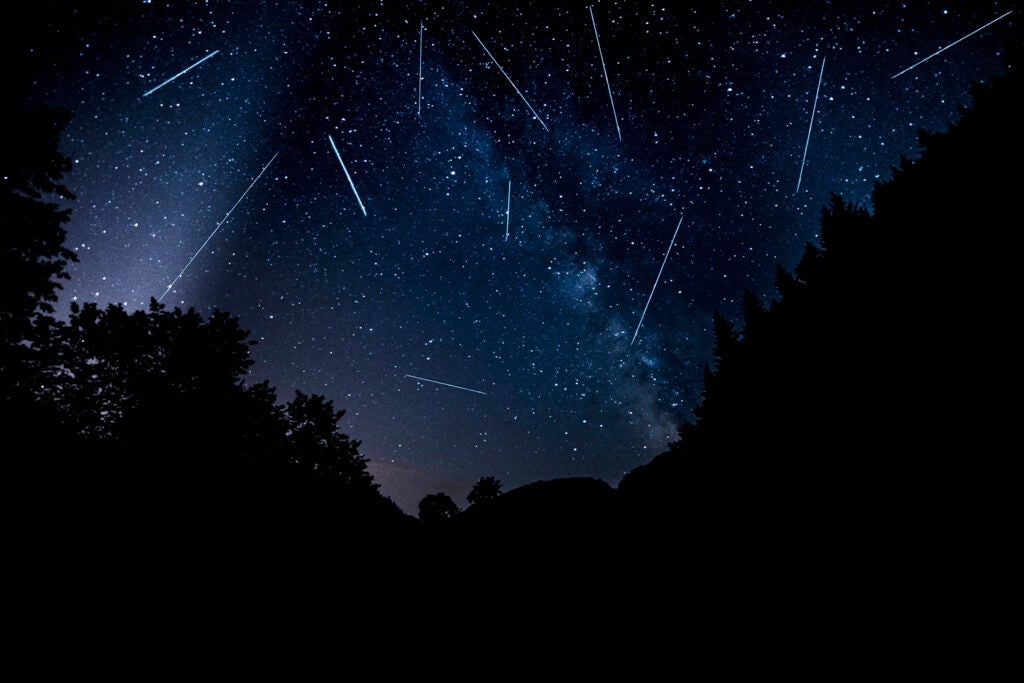How to watch the Perseid meteor shower
Conditions are favorable this weekend for seeing flaming bits of ice and rock streak through the sky.
The Perseid meteor shower, which peaks on Saturday night, is among the brighter meteor showers of the year, says astrophysicist Roger Romani, professor of physics and member of the Kavli Institute for Particle Astrophysics and Cosmology. “The numbers that people quote, 50 to 100 per hour, that’s based on a very dark site, like up in the Sierra, so you shouldn’t expect that here. But the ones that you do get are relatively bright so they can cut through the sky pollution in the Bay Area decently.”
The moon will be down for much of the night this year, which makes for better viewing conditions, he says. “It should be a good year to go and look for them. And summer evenings are a pleasant time to go out and spend some time looking at the sky.”
Romani works deep in the realm of black holes and neutron stars rather than meteor showers, but he took a few moments to offer some pointers for local stargazers.
What are we looking at when we see shooting stars?
Meteor showers occur when Earth passes through the trail of dust particles left behind by a periodic comet that is orbiting the sun, in this case, comet Swift-Tuttle. Meteors are caused by these dust particles vaporizing as they slam through Earth’s atmosphere. Because the comet trail is a specific orbit around the sun, we intersect the trail at about the same date each year – Aug. 12-13 for the Perseids – and the meteors appear to come from the same point against the stars. The “radiant,” or the origin point, is in the constellation Perseus, in this case.
What’s the ideal spot for seeing the Perseids this weekend?
Get to a safe dark place with as wide a view as possible of the sky, especially the northeast. Unfortunately for campus, northeast has city lights, but do your best. By Lake Lag could be OK, or even the Oval. I don’t think it’s the kind of event that you should take a big road trip for or anything like that. It’s probably better to just go out and enjoy it.
Any other tips for optimal viewing?
Allow 15 minutes for your eyes to adapt to the dark, so don’t look at your phone. Lie back with as much of the sky in view as possible and let your eyes roam around. Perseids should be flying away from the northeast in the late evening but can start anywhere in the sky. Watch with friends so they can call out what you have missed.
The later you are out the higher the radiant gets in the sky, so the show gets better. At a very dark site, you might see as many as 100 per hour at peak Saturday night from a completely unobstructed sky. Around here you’ll probably have to wait 5 to 10 minutes to see one. But it is not very predictable.
Are you planning to watch this year?
Well, it so happens that it’s my wife’s birthday. So we typically go out and watch for a while in the evening. I guess we’ll probably go look, but just in our backyard.
